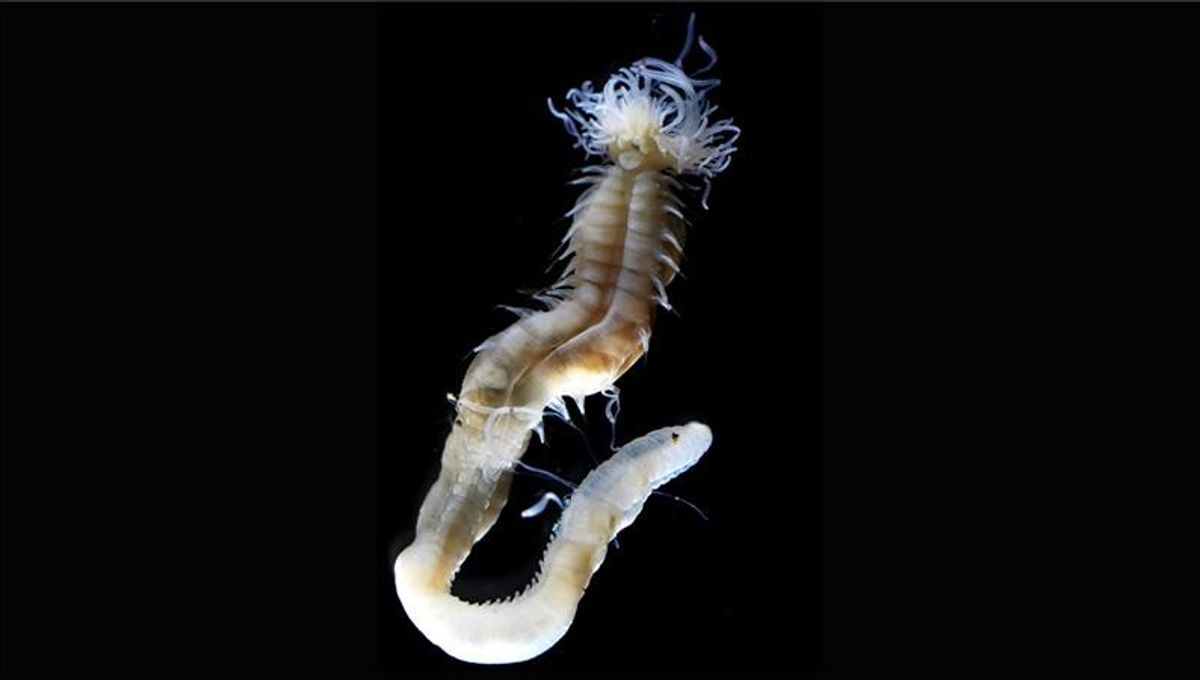
Scientists in central Japan have discovered three new species of bioluminescent worms that are eerily reminiscent of creatures from Japanese folklore. These new Polycirrus worms, found in various locations across Japan, have been named after these preternatural beings, as well as a famous Japanese marine biologist.
Bioluminescence is produced by organisms through a chemical reaction known as chemiluminescence. The reaction generates extremely low levels of heat, which has led it to be referred to as “cold light”. The organisms that create this effect do so for a variety of reasons, particularly for attracting potential mates or prey. Some species, such as millipedes and fireflies, also use the light to fend of predators.
However, despite their brilliance, bioluminescent organisms are actually quite rare. At present, scientists have only found around 7,000 such species of organism across the world, and mostly in the ocean. There has been limited research, as there have not been enough specimens available for sufficient classification and comparison.
This rarity makes the discovery of the new demon-worms all the more exciting.
“Our previous research on the luminescence of the genus Polycirrus had established it as a valuable subject for bioluminescence studies,” Naoto Jimi, lead researcher at Nagoya University in Japan, said in a statement. “However, we later discovered what we thought was a single species of Polycirrus was actually three different species.”
Polycirrus are small worms that are usually found in shallow waters – such as rivers and streams, or on the coast – in Japan. They are known for the tentacles they use to sift for food. These tentacles tend to give off a bright blue-violet glow, giving the worms a strange, otherworldly appearance.
As such, Jimi and his team thought it appropriate to name two of the three newly discovered specimens after notable phantasmal beings from Japanese folklore. One worm was named Polycirrus onibi after the will-o’-the-wisp type of yokai – Japanese spirit entity – called a onibi (demon fire), which is believed to lure travelers in remote regions to their doom.
Then there is Polycirrus aoandon, or blue lantern, which is named after a ghost-like yokai that appears as a demonic woman wearing a white kimono with horns and sharp teeth. This creature haunts lanterns, turning their flames blue when they are near.
The final worm, Polycirrus ikeguchii, was named after Shinichiro Ikeguchi, the former director of the Notojima Aquarium.
“We used the names of Japanese yokai, such as onibi and aoandon, for the new species because the hazy violet-blue bioluminescence emitted by the Polycirrus species is strikingly similar to the descriptions of these creatures found in folklore,” said Jimi. “Polycirrus ikeguchii, on the other hand, was described from specimens collected in the Notojima region in Japan. As Shinichi Ikeguchi was the former director of Notojima Aquarium and helped to find the worm, it seemed appropriate to name it after him.”
The researchers now want to learn how the newly discovered worms generate their glow. They hope their findings will deepen our understanding of molecular processes involved in bioluminescence, which could have an impact on the development of new technologies.
“The discovery that all three new species are luminescent has allowed us to link taxonomic and ecological findings and establish research that others can readily apply to the study of luminescent organisms,” said Jimi.
“Understanding these luminescence mechanisms contributes to medical and life science research. Bioluminescence is a treasure trove of interesting and unusual chemistry. We intend to use our findings to deepen our understanding of the molecular nature of this phenomenon and apply this knowledge to the development of new life sciences technologies.”
The study is published in Royal Society Open Science.
Source Link: Glow-In-The-Dark Demons: Three Newly Discovered Worms Are The Stuff Of Nightmares